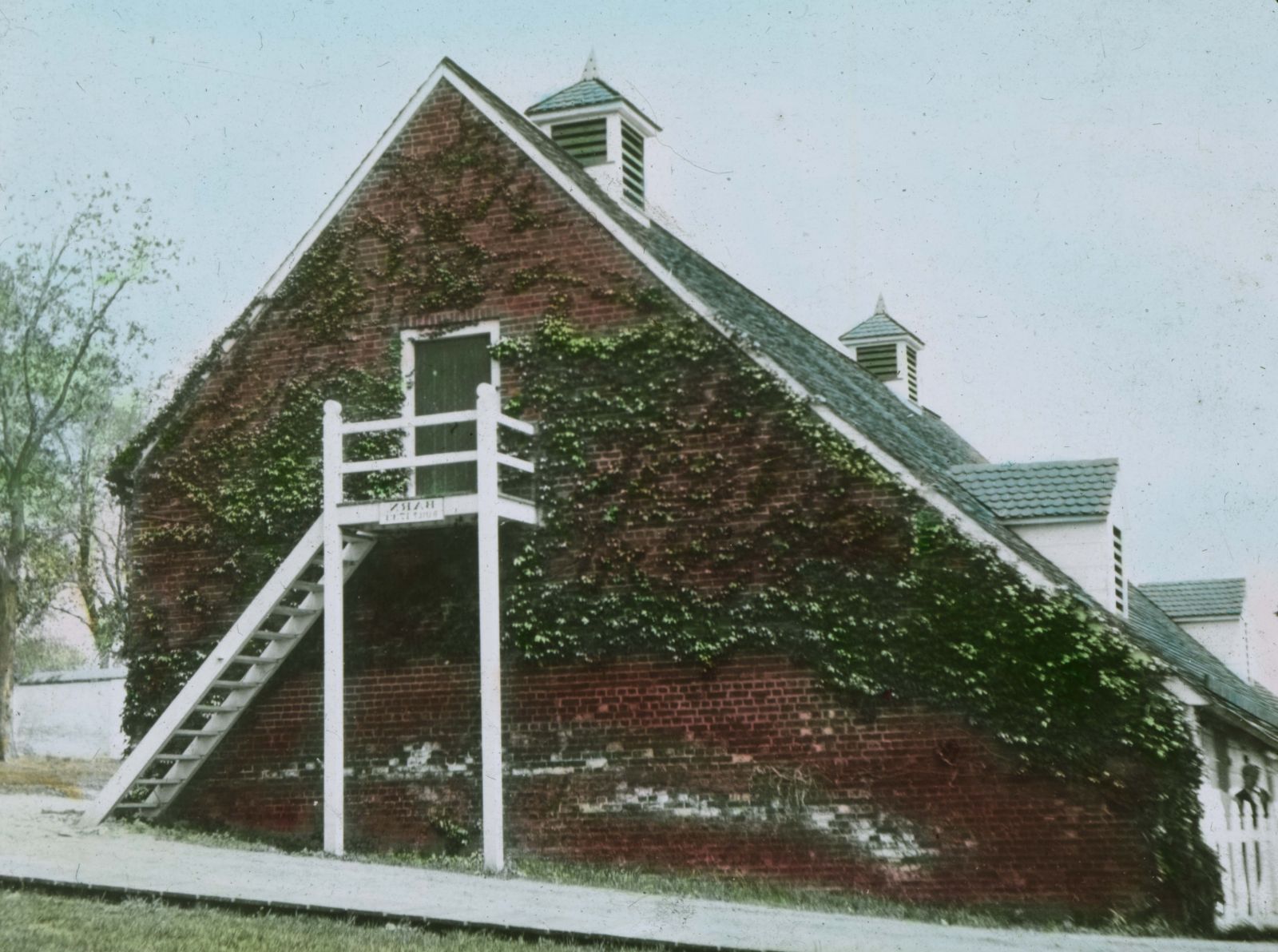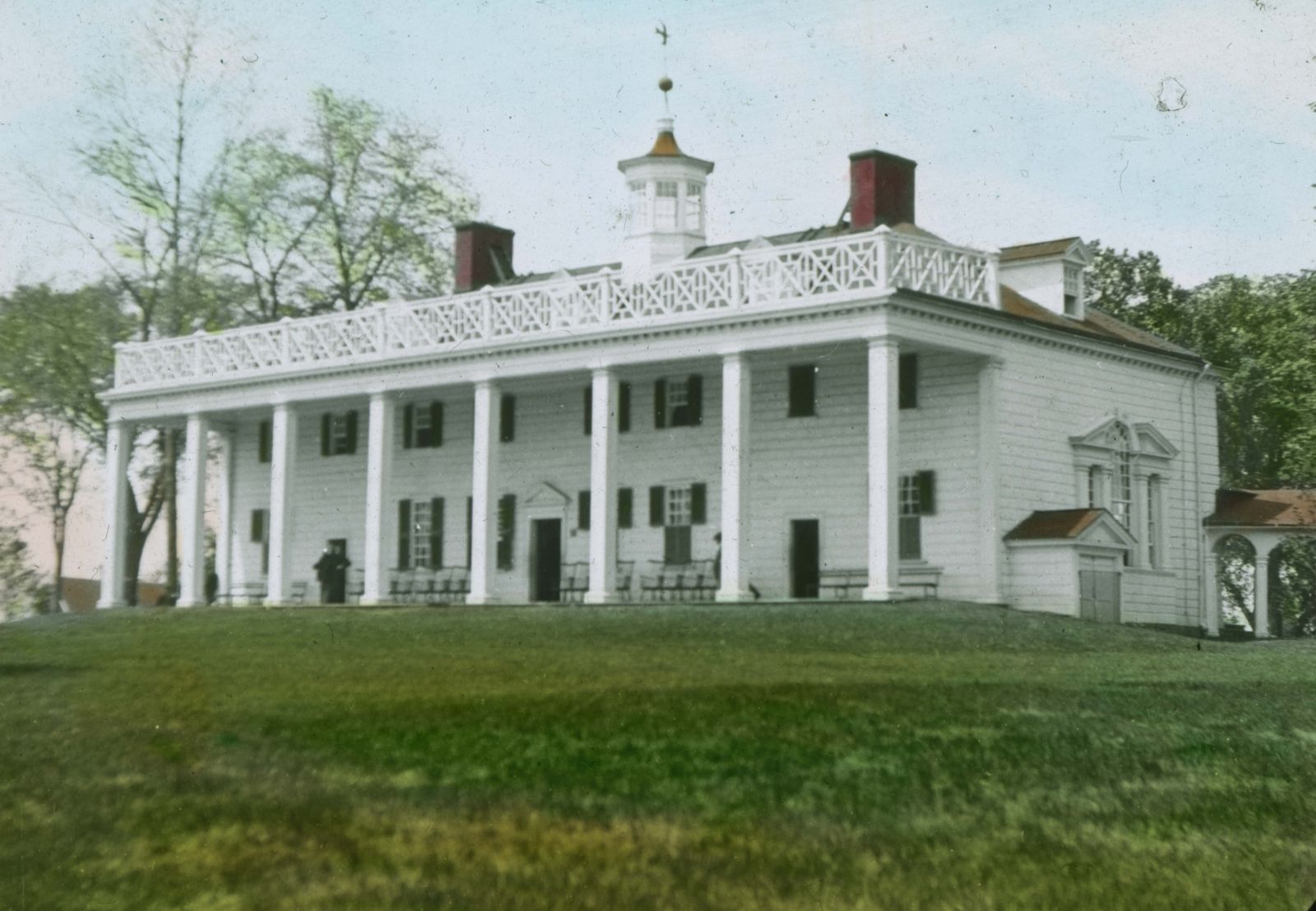Jenna Hershberger, SCRC Graduate Apprentice and former employee of the Mount Vernon Preservation Department, discusses Special Collections' lantern slides of Mount Vernon and their importance in the archaeological and architectural research of the famed George Washington home.
 The West Front of the Mansion at Mount Vernon
The West Front of the Mansion at Mount VernonPhotomania, an introductory photography course at William & Mary taught by Professor Eliot Dudik, recently visited Special Collections to see a variety of different types of photographs, including daguerreotypes, tin types, stereoviews, and several other formats. Among the selection of photos were lantern slides from the Kelvin Ramsey Collection of Lantern Slides and Stereoviews (MS 00009). This collection includes over forty slides of George Washington’s Mount Vernon. Lantern slides are mounted photographic transparencies designed for projection in a slide projector. As it turns out, Mount Vernon does not have copies of these slides, so SCRC student assistants digitized them and sent the scans to the historic site’s preservation department.
The slides are a mixture of color and black-and-white photos, and while most are undated, some definitely were produced in 1910, 1924, and 1937. Melander and Brothers, Keystone and Company, Bell and Brother, and D.H. Anderson distributed them.
 Notice the ivy growing along the barn wall
Notice the ivy growing along the barn wallThe pictures portray a variety of subjects at Washington’s home. There are several shots of the New Tomb throughout different years, evidenced by the amount of ivy climbing over it. Outbuildings include one of the barns, the interior of the spinning house, and the north garden house. The majority of the pictures, however, are of the Mansion itself. Oddly enough, many of the Mansion views face the southwest. This is a particularly interesting angle because today trees grow in the spot from which the photos were taken, and the majority of visitor shots of the East Front of the Mansion (the side with the piazza) are currently taken looking northwest. This change could not only be due to the trees, but also the path by which visitors tour the house. An aerial view of the estate shows the area before it was developed. Today, houses, strip malls, and a section of Fort Belvoir hedge in the property, but in this shot, it appears that farmland surrounded the plantation for quite a while.
While all of this information is interesting, it may seem completely random and useless to the average researcher. The Mount Vernon Preservation Department, however, will certainly be able to take advantage of the material provided in the slides. The department encompasses both archaeology and architectural conservation, and both of these groups may find the photographs useful.
 The kitchen at Mount Vernon, missing its window sashes
The kitchen at Mount Vernon, missing its window sashesArchaeologists can use the photos to date what kinds of ground disturbances occurred throughout the years. Trees and walls have been removed, but having some idea of when they existed in those locations helps to date objects near, or in, the holes created by these disturbances.
For staff in architecture, including architectural historians and conservators, these photos can also assist in understanding changes to the buildings. For example, one picture of the kitchen shows that it was missing eight window sashes at the time it was photographed. Knowledge of the removal of these sashes can provide a better understanding of alterations and previous restoration measures. Consequently, the Mount Vernon preservationists are excited to receive the slides and put them to use in research.
 The East Front of the Mansion, looking towards the northwest
The East Front of the Mansion, looking towards the northwest
 Aerial view
Aerial view
References and More to Explore:
Finding aid for the entirety of the Kelvin Ramsey Collection of Lantern Slides and Stereoviews (MS 00009) on the Special Collections' database.
Learn more about historic preservation at George Washington's Mount Vernon.
Learn more about lantern slides from the Smithsonian Institution Archives.